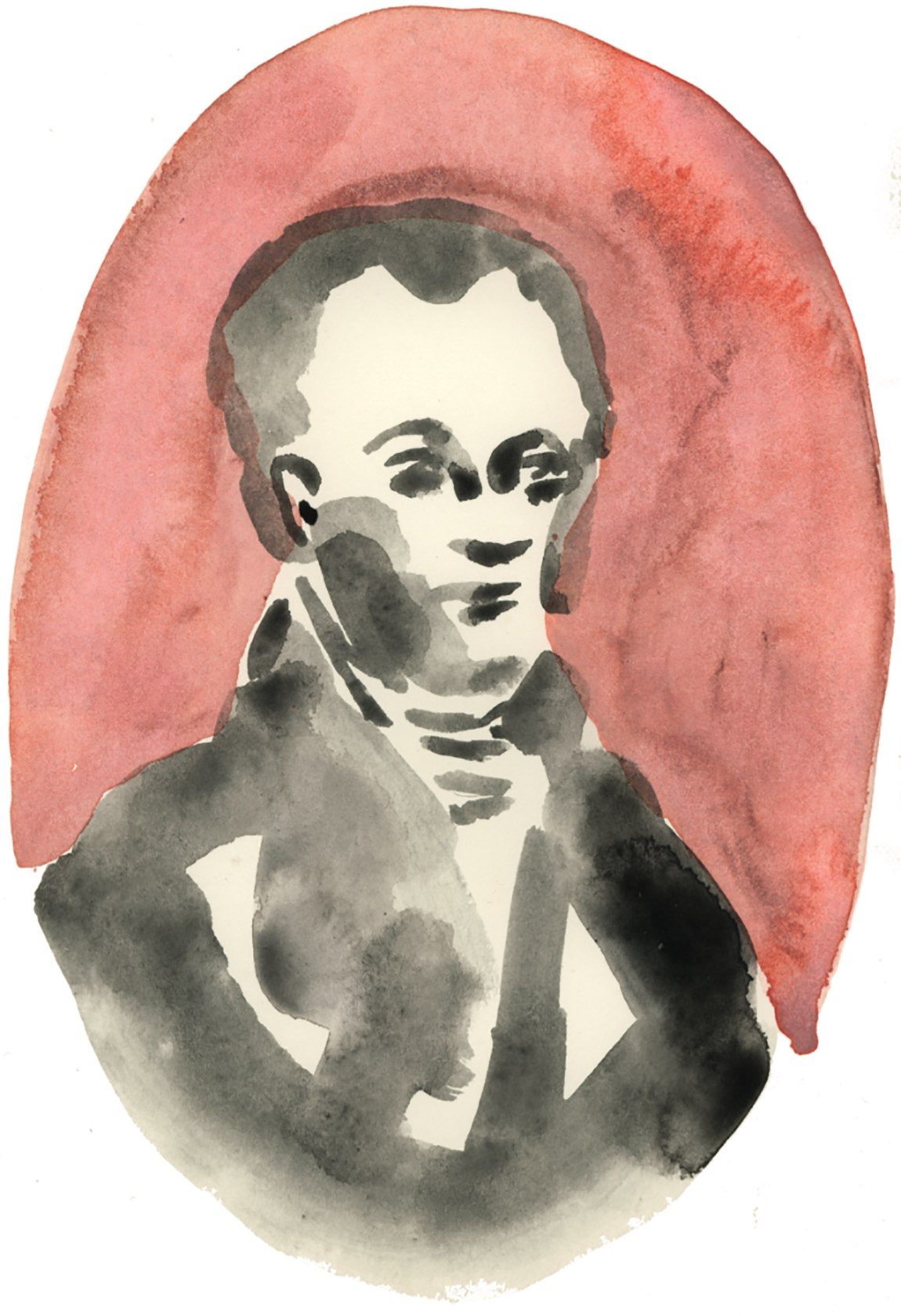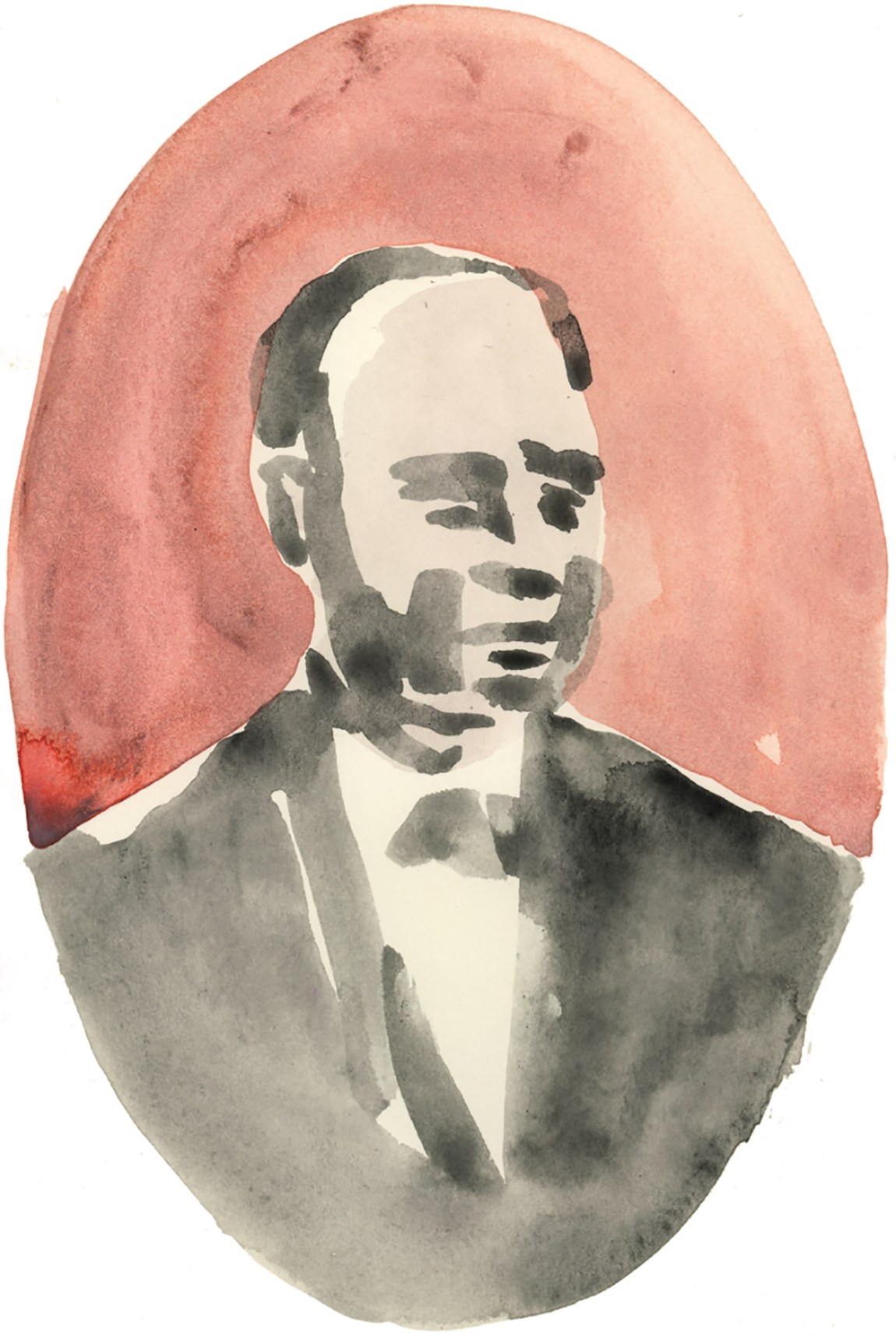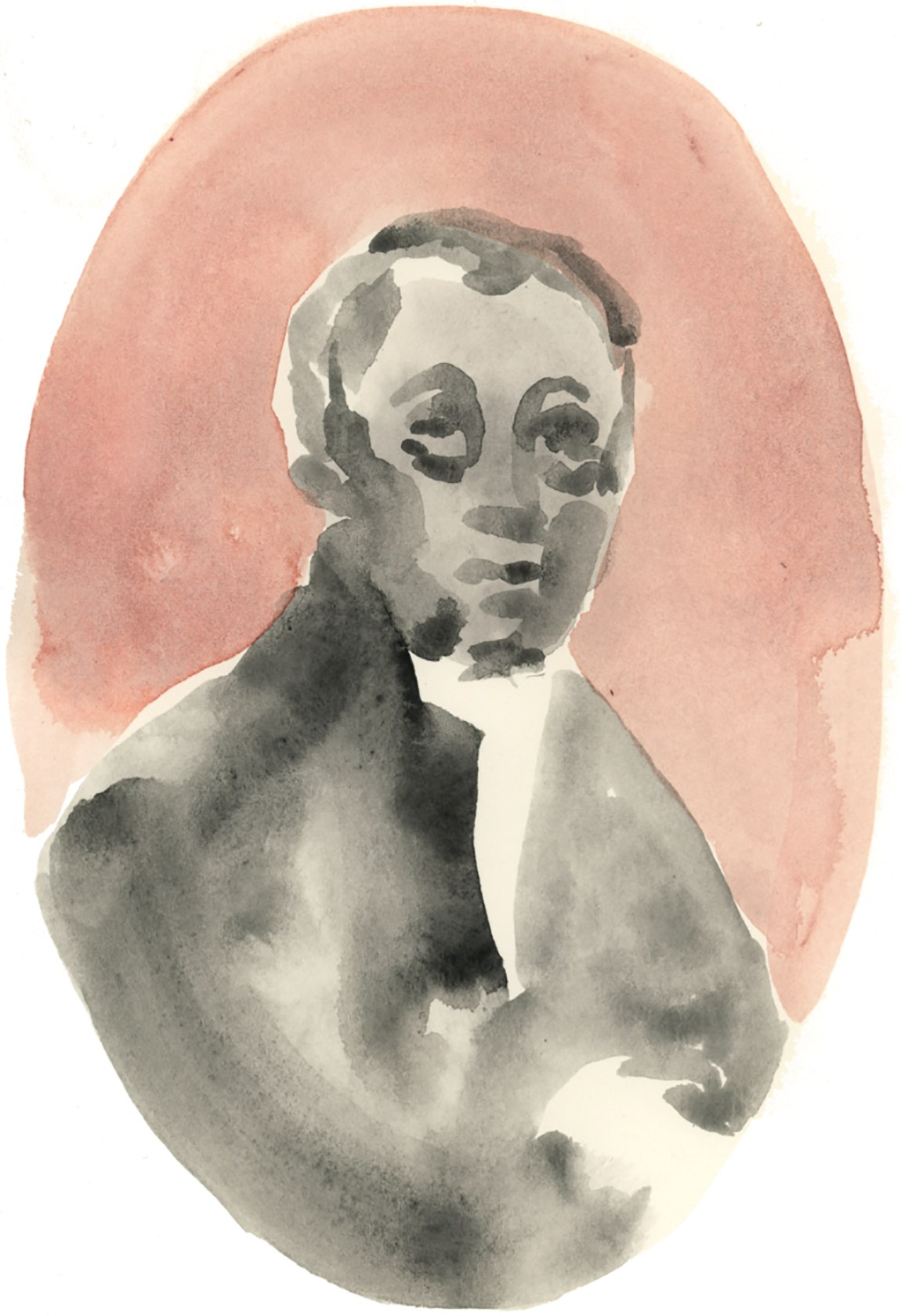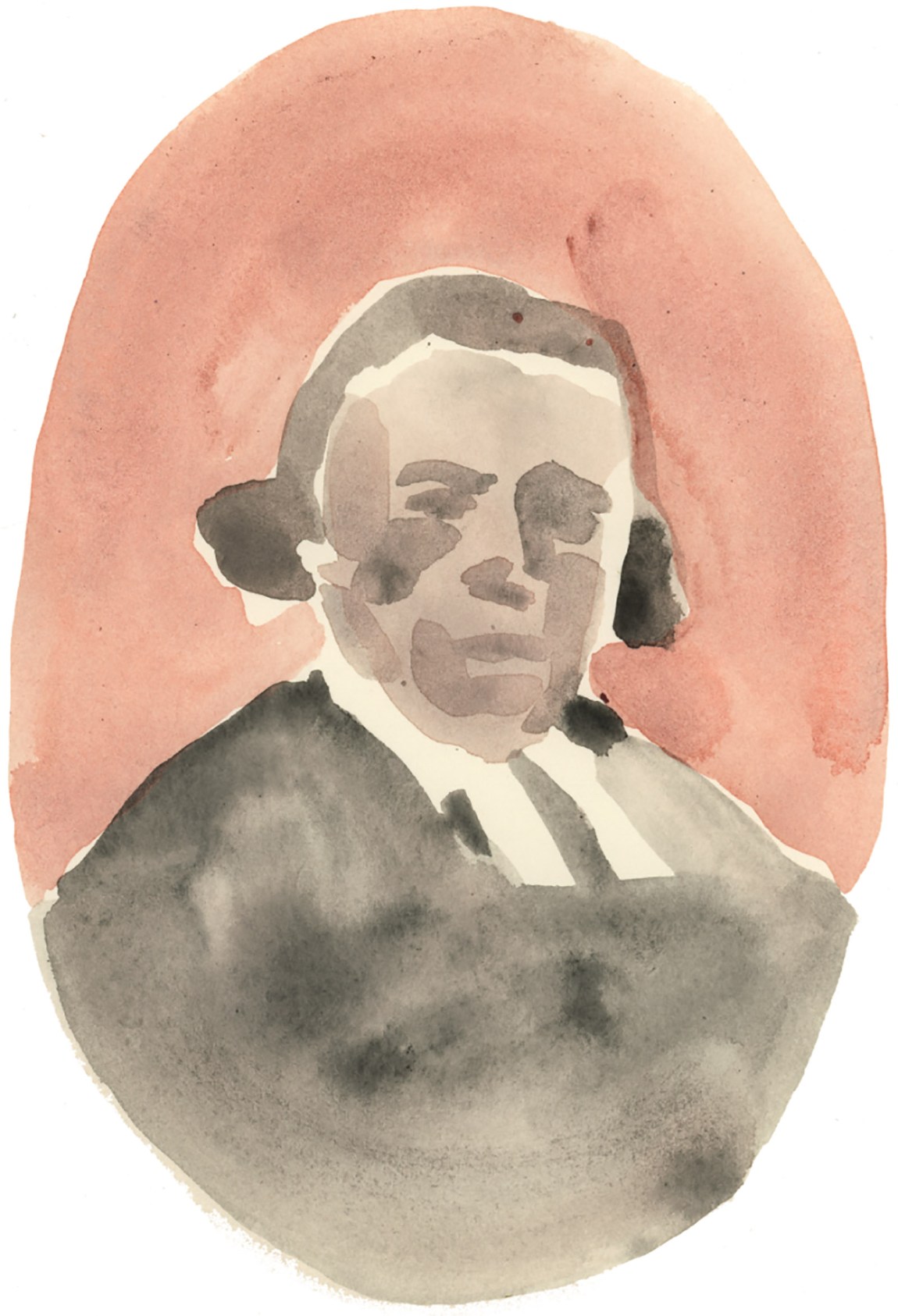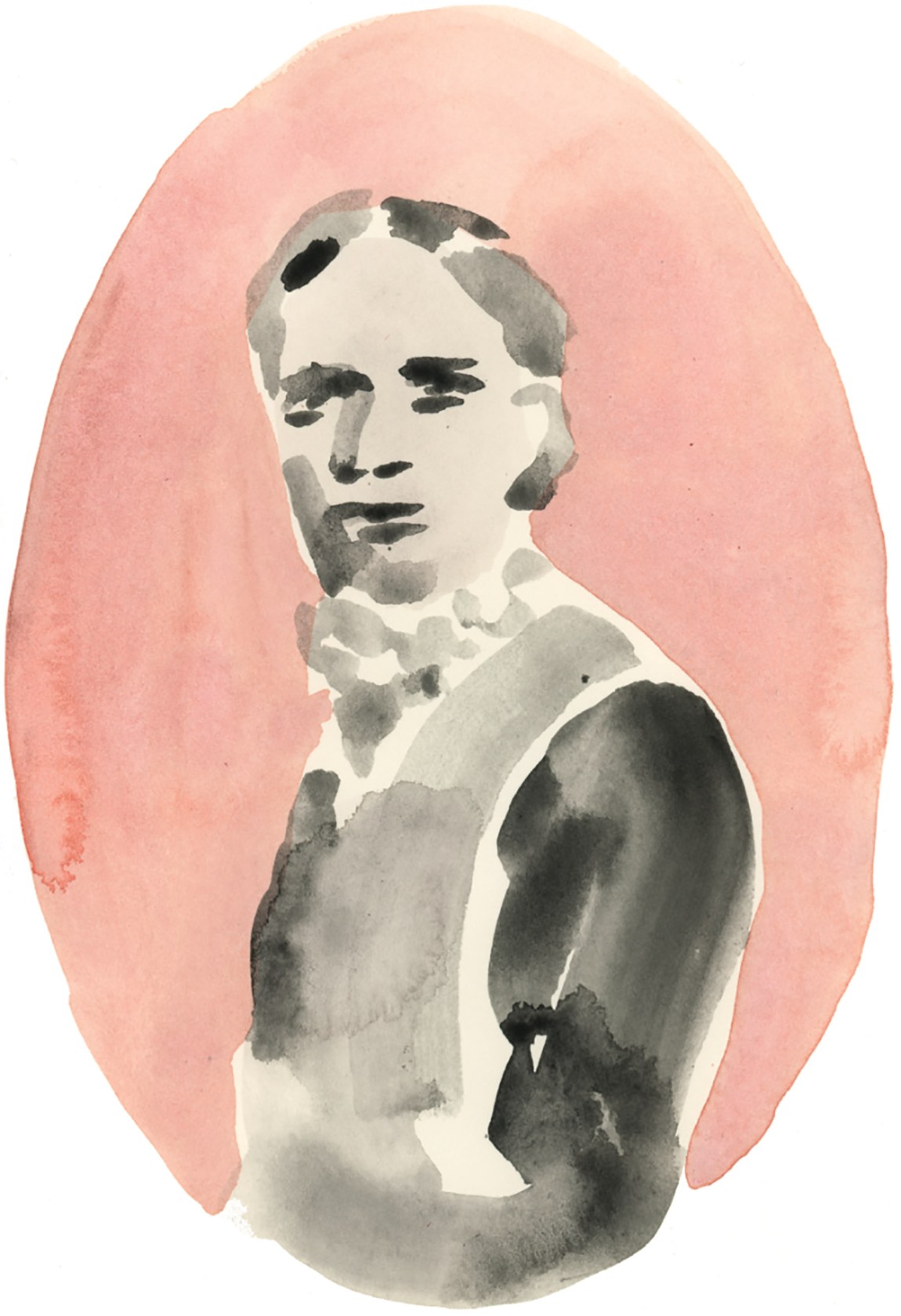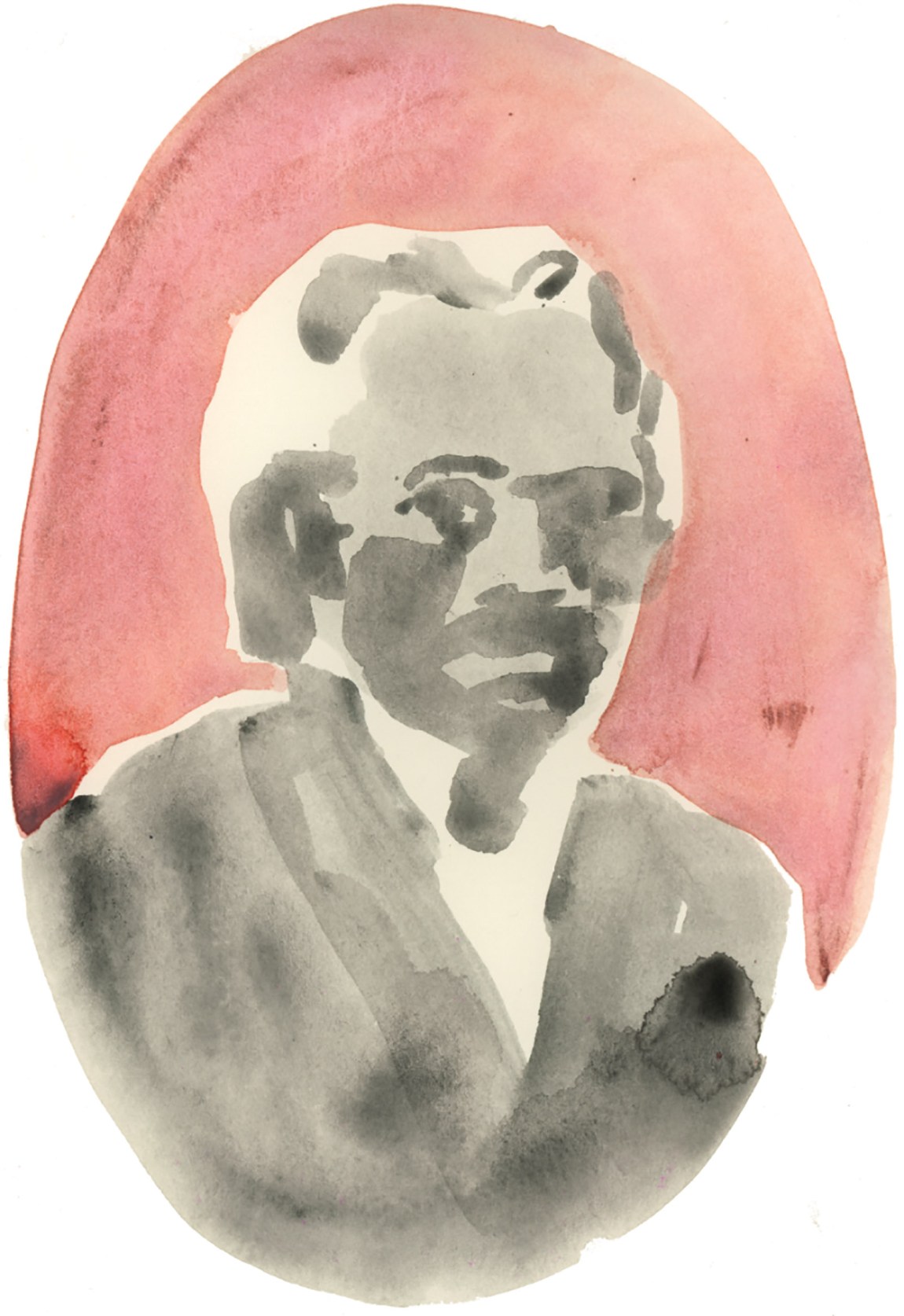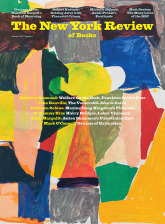Until Reconstruction-era acts and amendments to the Constitution established national citizenship and Black male suffrage, in the eyes of the law free Black people were at best second-class, unwanted citizens in most states of the Union. At worst, they were lumped together with the rest of the Black population—around 90 percent of which remained enslaved in the South as of 1860—and subjected to the slave codes, state laws dating from the colonial era that legalized racial distinctions and made slavery an inheritable condition for children of enslaved women. That things changed is largely thanks to African American activists and their abolitionist allies, who helped rewrite notions of citizenship to expand American democracy.
While the Constitution uses the word “citizen” multiple times to describe who is eligible to hold political office, it never defines “citizenship” outright or its relationship to voting rights. It also contains no racial restriction on citizenship, and in some states free Black men did vote in the early years of the republic. The Three-fifths Compromise gave southern states extra representation in Congress based on their slave population. Throughout the Union, the states were left to determine citizenship and suffrage requirements, just as they were free to retain or abolish slavery.
Early on, however, the federal government enacted a number of laws that constrained Black freedom and citizenship. In 1790 Congress passed the Naturalization Act, which limited the possibility of US citizenship to white immigrants. The second Militia Act of 1792 barred African Americans from serving in state militias. The Fugitive Slave Act of 1793 activated a clause of the Constitution that required any “person held to service” to be remanded back to their owners—extending southern laws of slavery into northern free states. In 1802 Congress prohibited African Americans from carrying the US mail.
While northern states had abolished slavery by the early nineteenth century, most slave states prohibited free African Americans from entering them and required emancipated slaves to leave, forcing them to abandon their homes and families. Slave states still generally consigned free Black people to a permanent underclass, and they were often whipped, incarcerated, and even enslaved for petty crimes. Free Blacks were viewed as a subversive population, since their very existence defied the carefully constructed racist logic of slave society.
In the northern states, free African Americans faced a host of less severe discriminations. Even when they were recognized as citizens, they rarely enjoyed equal rights with whites. In New Jersey, free Blacks and women who met property-holding requirements were eligible to vote until 1807, when the state restricted the franchise to tax-paying white male citizens. Free Black men voted in a handful of New England states, but as property-holding qualifications were done away with for white men with the spread of Jacksonian democracy, new restrictions were instituted to prevent the spread of the Black vote. Laws disenfranchising all Black men were passed in Connecticut in 1814 and Pennsylvania in 1838, and New York’s 1821 state constitution established adult manhood suffrage for white men but retained a property-holding qualification for Black men that effectively disenfranchised most of them. Black activism, however, flourished in the North, in a manner that it could not in the slave South, with the rise of the abolition movement.
Two books published shortly before the pandemic and just released in paperback delve into the history of antebellum African American political activism and thought. In Remaking the Republic: Black Politics and the Creation of American Citizenship, Christopher James Bonner, a professor of history at the University of Maryland, examines the early political struggles of free African Americans that helped to define citizenship after the Civil War, as well as the tools they used—among them early Black newspapers and national and local Black conventions—“to create a black American political community.” In The Practice of Citizenship: Black Politics and Print Culture in the Early United States, Derrick R. Spires, a professor of English at Cornell, analyzes how early Black newspapers, pamphlets, and the published proceedings of the Black conventions gave birth to new theories and practices of citizenship.
The first Black newspaper in the United States, Freedom’s Journal, was founded in 1827 by the Presbyterian minister and Black abolitionist Samuel Cornish and his coeditor, John Russwurm. Its inaugural issue announced, “We wish to plead our own cause. Too long have others spoken for us.”1 Cornish and other early Black abolitionists fought against the colonization movement, which aimed to send free Blacks to Liberia, the American colony on the west coast of Africa. Instead, Cornish and Russwurm linked suffrage to citizenship and demanded the right to vote for Black men. When Russwurm defected to the colonization movement and emigrated to Liberia in 1829, Freedom’s Journal collapsed and Cornish founded another newspaper, The Rights of All. After it too collapsed, Cornish took over a Black newspaper called The Weekly Advocate, which was renamed The Colored American in 1837; published by Charles Bennett Ray, it became one of the longest-lived Black newspapers before the Civil War.
Advertisement
Cornish connected the struggle for citizenship with racial uplift and the moral reform of free Black communities. He warned northern free Blacks, who were predominantly urban, against “city dissipation” and recommended a life of “respectability and usefulness” in the countryside. He also urged Black men to acquire land to meet New York’s property-holding qualification for voting, bowing to the political reality facing Black men in the state. Many African Americans answered this call by taking advantage of the white abolitionist Gerrit Smith’s spectacular deed of land to three thousand Black men in upstate New York in 1846.
One of them was Willis Augustus Hodges, who was born in Virginia to free Black parents in 1815. During his childhood his family was terrorized multiple times by bands of armed white men; Hodges later wrote that “no free person of color…was safe in person or property” in a slave state. Hodges moved to New York in 1833, and by the early 1840s he was involved in political work. In 1847 he began publishing the weekly antislavery newspaper The Ram’s Horn with Thomas Van Rensselaer, a close associate of the abolitionist William Lloyd Garrison. John Brown also settled in the Smith lands amid African Americans in a village they named Timbuctoo, and first published his writings in Hodges’s newspaper.
In 1829 Cornish and his Rights of All colleagues had argued that their newspaper was “the only channel of communication which we have with the whites—the only voice by which we can speak to our brethren at a distance.” That same year Irish immigrant–led white mobs in Cincinnati rioted against the city’s Black community, more than a thousand of whom fled to other states or Canada. The following year activists launched the national Black convention movement, working to build, in Bonner’s words, “a broad political community that transcended state and local boundaries.”
The first convention was called in Philadelphia in 1830 to discuss emigration to Canada—“not as a permanent home for African Americans,” Bonner writes, “but as a means to alleviate the prejudice and economic inequality that resulted from overcrowding in northeastern urban centers.” After that the national Black convention met almost every year to demand equal citizenship rights and fight the colonization movement’s continuing efforts to force Black Americans to move to Liberia. Delegates ranging in numbers from sixty to well over a hundred were selected from Black communities from all over the country, primarily from the North. But the national convention disbanded in 1835 and was succeeded by the short-lived American Moral Reform Society.
After a hiatus of eight years, the national conventions were restarted by a number of Black abolitionists, among them Reverend Henry Highland Garnet, whose family had escaped from slavery in Maryland and settled in New York when he was a child. At the 1843 national convention, held in Buffalo, Garnet issued his famous “Address to the Slaves of the United States of America,” in which he called for enslaved people to “go to your lordly enslavers, and tell them plainly, that you are determined to be free”; they had “far better all die—die immediately, than live slaves and entail your wretchedness upon your posterity.” His address was opposed by another fugitive slave abolitionist, Frederick Douglass, who viewed it as a call for slave rebellion, and the convention voted narrowly not to publish the speech in its proceedings.2
Douglass and Garnet were ideologically opposed in other ways as well. Garnet supported the Liberty Party, led by Gerrit Smith and other political abolitionists who wanted, Bonner writes, “to bring antislavery politics into Congress and fight bondage from within the bounds of the current Constitution,” while Douglass followed Garrison in opposing the conversion of the abolition movement into a political party. But in the decade before the Civil War, Douglass became convinced by political abolitionism and also began to advocate violent resistance to the Fugitive Slave Act of 1850.
One of the strengths of Bonner’s book lies in his recovering of the ideas and lives of the largely unknown Black activists involved in these conventions, like Samuel H. Davis and William C. Munroe. Born free in Maine in 1810, Davis was educated at the abolitionist Oberlin College, one of the few institutions of higher education open to African Americans, and later became the principal of the Buffalo African School. As chair of the 1843 convention, he called for a uniform national definition of American citizenship, arguing that the various legal restrictions Black people faced in different states violated the US Constitution, which guaranteed “freedom and equal rights to every citizen”—“a remarkable interpretative move,” Bonner writes.
Advertisement
Munroe was a teacher and minister from Detroit, where he led the Colored Vigilant Committee, which assisted free African Americans and fugitive slaves. At the convention he presented a national citizenship resolution that invoked the privileges and immunities clause by simply stating, “By the second section of the fourth article of the Constitution of the US, we [are] citizens.” “The vagueness of the Constitution and the uncertainties surrounding citizenship,” Bonner argues, “provided a space for Munroe and others to define the federal government as an authority that could secure black rights.”
African Americans also took their struggle for citizenship abroad. The Black abolitionist William Wells Brown, who spent a number of years in Britain, declared, “We will not write our wishes upon the stone walls in America but we will write them upon the hearts of the people of the entire world, until we shame the Americans into good manners.” Bonner cites Douglass’s remarkably successful nineteen-month tour of the British Isles, where he raised money to purchase his freedom and found his own newspaper, The North Star. Black abolitionists like Douglass, Brown, and many others welcomed the European revolutions of 1848, connecting their fight for citizenship with the spread of revolutionary republicanism. The national Black convention held in Cleveland that year commended the Second French Republic, especially its abolition of slavery.
Bonner notes that despite the cosmopolitan nature of Black activism, it could also be nativist. Black abolitionists at times resented European immigrants to America, who were afforded the rights of citizenship that were denied to African Americans. Many immigrants tended to support the proslavery politics of the nineteenth-century Democratic Party, became involved in the periodic racist riots against free Black communities with whom they competed for jobs and housing in northern cities, and assisted in fugitive slave rendition. As Douglass pointed out, “The Irish, who, at home, readily sympathize with the oppressed everywhere, are instantly taught when they step upon our soil to hate and despise the Negro.”
The African American condition in pre–Civil War America was defined not just by acute racism but by the widespread suspicion that all Black people were runaway slaves rather than citizens. Black and white abolitionists had long organized vigilance committees to prevent the kidnapping of free Blacks back to southern slavery as well as fugitive slave rendition from the North. Bonner argues that as a result of the criminalization of Blackness, “personal security” was a “key aspect of citizenship” for Black activists that unfortunately remains true even today, epitomized in slogans such as “Black Lives Matter” and “I Can’t Breathe.”
After the Supreme Court in Prigg v. Pennsylvania (1842) declared unconstitutional all northern state laws giving legal protections like trial by jury to suspected runaways, abolitionists took their fight to the streets. They assisted fugitive slaves in the Underground Railroad and stormed courtrooms and jails to free those who had been captured—especially after the passage of the Fugitive Slave Act of 1850. But abolitionists also fought using the courts, evoking the legal protections of English common law against unlawful detention, such as writs of habeas corpus and homine replegiando, to free incarcerated runaways. The Fugitive Slave Act as well as the infamous Dred Scott decision (1857), in which the Supreme Court declared that Black Americans could not be citizens, further spurred the fight for Black citizenship. As Bonner concludes, “Black citizenship politics, before and after the Civil War, helped to make the legal changes of Reconstruction.”
Like Bonner, Spires looks at early Black writing and political conventions to examine “the practice of citizenship” among African Americans in the era of slavery. But he takes a more cynical view of the interracial democracy briefly established during Reconstruction, arguing that the “trappings of liberal citizenship” in fact “served to subjugate newly freed black people under the guise of formal equality.” Borrowing a phrase from the cultural theorist Lauren Berlant, Spires points to early Black thinkers who warned against a
cruel optimism in which the citizenship struggled for and won becomes the means for reconstructing modes of subjection, a bait-and-switch in which giving up on a more critically engaged citizenship and claims for reparative justice are the price for admission.
While one may disagree with this interpretation, Spires’s recovery of independent Black theories of citizenship is intellectually sophisticated and highly original.
Spires offers a “reparative reading” of African American ideas about citizenship that go beyond the country’s founding ideals of civic republicanism. His starting point is Richard Allen and Absalom Jones’s A Narrative of the Proceedings of the Black People During the Late and Awful Calamity in Philadelphia in the Year 1793 and A Refutation of Some Censures, Thrown upon Them in Some Late Publications, a 1794 pamphlet on the yellow fever epidemic in Philadelphia, during which almost five thousand people died, including nearly four hundred African Americans, and 20,000 people fled the city. Their pamphlet is often read as a response to an earlier pamphlet that accused the city’s Black community of robbing the sick under the guise of taking care of them, written by Matthew Carey, a colonizationist who believed that all free Blacks should be sent back to Africa.
Reverend Allen founded one of the oldest Black denominations in the country, the African Methodist Episcopal Church. Both he and Reverend Jones were former slaves who had bought their freedom. During the epidemic they had been asked by leading Philadelphians to rally African Americans, who were falsely believed to be immune to yellow fever, to help care for the sick and dispose of the dead. In the process, many Blacks (including Allen himself) contracted the disease; those who died did so at the same rate as whites. Allen and Jones’s pamphlet documents the selfless work performed by the city’s Black population during the epidemic and ends with a remarkable abolitionist philippic, “Address to Those Who Keep Slaves, and Approve of the Practice.”
Spires concentrates on Allen and Jones’s expression in their pamphlet of “neighborly citizenship,” which he traces to early Quaker abolitionists like Anthony Benezet as well as the British abolitionist Granville Sharp. Based on the biblical parable of the Good Samaritan, neighborly citizenship was a belief in a “civic ethics” that rendered “services where extreme necessity called for it” and advocated for mutual aid. Spires argues that their pamphlet demonstrates “a social theory of citizenship as a practice of neighborliness” and “the proactive engagement with the suffering stranger.”
Spires takes a different approach to the Black convention movement than Bonner does. Instead of focusing on the national conventions, Spires examines the minutes, resolutions, and speeches of the state conventions, which he thinks may have been a more effective medium for circulating African American ideas and debates over citizenship, since states determined its requirements. He argues that the state conventions, which began in 1837 and continued into the 1890s, became an African American shadow government of sorts. Black and abolitionist newspapers published the calls for conventions, listing specific grievances, and after the conventions met published their proceedings demanding voting rights and protesting discriminatory laws. These publications articulated, according to Spires, a “theory of civic circulation and power.” The conventions “began and ended in print,” representing a “radical expansion of republican citizenship” and “an alternative mode of citizenship practice” even as racist laws narrowed “official channels” for African Americans. The gatherings also helped foster an autonomous Black politics, independent of even white abolitionist allies (though they attended as nonvoting participants).
Despite continual attempts by women to get the Black conventions to seat them as delegates and endorse women’s rights, the conventions advocated what Spires calls “gendered citizenship” for African American men. At the 1849 Ohio State Convention, Black women led by Jane P. Merritt protested:
Whereas we the ladies have been invited to attend the Convention, and have been deprived of a voice, which we the ladies deem wrong and shameful. Therefore, Resolved, That we will attend no more after to-night, unless the privilege is granted.
Their threat of a boycott resulted in a resolution inviting them to participate in the convention’s proceedings, and its address to the citizens of Ohio was changed to refer to “human being” rather than “manhood” rights.
One could add that twenty-nine Black women attended the National Emigration Convention in Cleveland in 1854, called by Martin Delany. Mary Bibb, a schoolteacher who supported Black emigration to Canada, was elected vice-president along with three others. Ironically, Delany’s pro-emigration convention was more open to Black women than the conventions advocating American citizenship for Black men. Neither Bonner nor Spires discusses the emigration movement of the 1850s led by Black abolitionists such as Delany and Garnet at much length. Bonner concludes his book with Garnet’s death in 1882 as the American minister to Liberia, still searching for national belonging after the overthrow of Reconstruction in the South.
Spires’s analysis of the crisis decade of the 1850s centers on close readings of articles in the short-lived Anglo-African Magazine (1859–1860) about the potential for Black citizenship in the US. The paper was founded in New York City by Robert and Thomas Hamilton, sons of the Black abolitionist William Hamilton, who was rumored to be the illegitimate son of Alexander Hamilton. The Hamiltons supported emigration and published Delany’s tale of a transnational slave rebellion, eventually printed as the novel Blake.
The magazine also included a series of seven imaginative essays by the Brooklyn teacher William J. Wilson, also known as “Ethiop.” A few years earlier Wilson, after visiting two art galleries in New York City, wrote to Frederick Douglass that “we must begin to tell our own story, write our own lecture, paint our own picture, chisel our own bust.” His “Afric-American Picture Gallery” series is a tour of an imaginary Black art gallery filled with scenes from African American and United States history, including glimpses of a slave ship, the Underground Railroad, the Haitian Revolution, and “Sunset in Abbeokuta” (no doubt a reference to Delany’s African expedition to Abeokuta in 1859). Spires is intrigued by Wilson’s implicit critique of the Founding Fathers Washington and Jefferson, particularly his description of a picture of Mount Vernon, Washington’s plantation, as standing for a “morally bankrupt past.”
Spires also spotlights the debate on “economic citizenship” between Wilson and the Black physician and abolitionist Smith (writing as “Communipaw”), which appeared in the pages of Frederick Douglass’ Newspaper from 1851 to 1854. Wilson, in his “Letters from Our Brooklyn Correspondent,” argues for a Black aristocracy to harness economic power for racial uplift, writing, “The presence of such a class to urge, assist and otherwise encourage would cause the really ambitious to step out from among the masses continually and climb up to it.” Smith, in contrast, is skeptical of the wealthy, who “are never a progressive class; they are by necessity conservatives.”
Smith’s articles, published under the title “Heads of the Colored People,” give us realistic portrayals of Black workers and the “middling class” to argue for a broad Black economic citizenship based on labor. Smith puts forward bootblacks as “the best average colored man,” “men of character, not wealth.” While Wilson emerges as the precursor to W.E.B. Du Bois’s vision of the “talented tenth” and Booker T. Washington’s National Negro Business League at the turn of the century, Smith’s concept of Black economic citizenship was a powerful critique of the class and racial inequalities generated by American capitalism. But Spires believes Wilson’s analysis to be “the more accurate” foreshadowing of the economy of the Gilded Age, and a better reflection of the unequal nature of market society.
When Spires turns to the Dred Scott decision, instead of examining the best-known African American condemnations of it, he focuses on the writings of the Black abolitionist-feminist Frances Ellen Watkins Harper, which he calls, borrowing the words of Frantz Fanon, “a form of political insurgency.” Her “literary representation” of slave rebellions become “part of a revolutionary process.” Spires argues that Harper’s “Fancy Sketches,” parlor conversations that she published in the Anglo-African, offered a vision of “revolutionary citizenship” in “gendered spaces” compared to “more explicitly political (and masculinist) fora such as conventions.” Harper’s short stories and poems “draw on local revolutionaries” like the sensational, heartbreaking Margaret Garner, who killed her daughter rather than have her hauled back to slavery (the incident that inspired Toni Morrison’s novel Beloved) and the 1856 slave insurrection conspiracy scare in Tennessee. Harper’s sketches of rebellion were transnational as well, including Palmares, the largest maroon community of runaway slaves in Brazil, led by the ex-slave revolutionary Zumbi.
In these stories Black women occupy center stage.3 Historians and literary critics are still recovering Harper’s full oeuvre, much of which was published in the Black and abolitionist press: just a few years ago the University of Connecticut women’s studies professor Johanna Ortner found a copy of her first book of poems, Forest Leaves (circa 1846), which had been considered lost.
While Remaking the Republic and The Practice of Citizenship are largely theoretical in approach, Anna Mae Duane’s Educated for Freedom: The Incredible Story of Two Fugitive Schoolboys Who Grew Up to Change a Nation is more biographical, weaving together the life stories of two figures who also appear in Bonner’s and Spires’s books: Henry Highland Garnet and James McCune Smith. Both were graduates of the New York African Free School, founded in 1787 by the Quaker-dominated New York Manumission Society, whose members included, as Duane puts it, “Alexander Hamilton and John Jay, two founding fathers still flush with optimism about freedom’s power to transform the country.”
At the school Garnet and Smith were part of an extraordinary group of African American students that also included the Episcopalian minister Alexander Crummell, the actor Ira Aldridge, the abolitionist brothers Patrick and Charles Reason (one an engraver, the other the first Black professor at New York Central College), the abolitionist Thomas Sidney, the civil rights leader George T. Downing, and the journalist Philip Bell, who co-founded The Colored American newspaper with Ray. In this outstanding cohort, Smith excelled above all, and was chosen as a young student to address the French revolutionary hero Marquis de Lafayette during his triumphant 1824 tour of the United States.
Garnet and Smith, Duane argues, eventually “laid the groundwork for Black political and intellectual thought for generations to come.” Duane, a professor of English at the University of Connecticut, chronicles the schoolboy friendship and later the creative conflict between Smith, a self-effacing intellectual, and Garnet, a charismatic incendiary. Frederick Douglass figures prominently in their stories, as a confidant to Smith and competitor of Garnet, whose eloquence rivaled his own.4
Smith was born enslaved in New York in 1813 and was freed by the New York Emancipation Act of 1827. After graduating from the New York African Free School in 1828, he attended the University of Glasgow, where he became the first African American to earn a medical degree, as the doors of American medical schools were closed to him. (The University of Glasgow recently honored Smith by naming a building after him.) After graduating from Glasgow, Smith completed his medical residency in Paris and returned to the United States in 1837. He started a successful medical practice, ran a pharmacy in New York City, and eventually became the doctor on call for the Quaker-endowed Colored Orphan Asylum. In one of his first public speeches in New York, he “drew on medical knowledge to insist that Black bodies were no less suited for democracy than white ones.”
Smith used his scientific training to write telling critiques of the pseudoscience of race in the 1840s (as did Garnet and Douglass). He virtually single-handedly exposed gross statistical errors in the US Census used by the proslavery theorist John C. Calhoun to argue that free Blacks were worse off than the enslaved. In six Maine towns, he revealed, the Census listed more free Blacks as insane than the total number of Blacks who lived there, making “19 crazy men out of one man.” The soft-spoken Smith was the pride of abolitionists and New York City’s Black leaders.
Garnet was a firebrand who boycotted the Fourth of July. In 1835, after he and two of his African Free School classmates, Crummell and Sidney, were admitted to the abolitionist Noyes Academy in New Hampshire, a racist mob destroyed the school. They completed their education at the abolitionist Beriah Green’s interracial Oneida Institute in upstate New York, along with Garnet’s future wife Julia Williams—an activist in her own right who had also been hounded out of Noyes and cowrote Garnet’s famous address to the slaves. Garnet later traveled to England and joined the free produce movement, which tried to discourage the use of slave-grown products like cotton.
Initially Smith and Douglass decried Garnet’s call for slave resistance, even as they all worked together in the fight for Black male suffrage in New York. But after the passage of the draconian Fugitive Slave Act of 1850, they had both come around to his viewpoint, cheering on violent self-defense by fugitive slaves and John Brown’s assault on slavery in Kansas and at Harpers Ferry, Virginia. However, Smith and Douglass remained firmly opposed to Garnet on Black emigration, which Garnet championed through the African Civilization Society that he founded in 1858. Smith chided Garnet:
More than a quarter of a century ago, you and others, among whom I was the humblest, pledged yourselves to devote life and energies to the elevation…of the free colored people on this, the soil which gave them birth.
The 1850s, bookended by the Fugitive Slave Law and the Dred Scott decision, led many Black abolitionists like Delany and Garnet to give up on attaining equal citizenship rights in the United States and start advocating Black emigration out of the country.
Nonetheless, in an introduction to Douglass’s My Bondage and My Freedom (1855), Smith argued that Garnet and other fugitive slave abolitionists such as Douglass, Wells Brown, Samuel Ringgold Ward (Garnet’s cousin), Reverend James W.C. Pennington, and Jermain Loguen were “living exemplars of the practicability of the most radical abolitionism.” They had escaped slavery and, along with composing the famous slave narratives that became a central part of the literature of abolition, brought the tactics of direct action and street protest to the movement.
In 1865, when Garnet became the first Black man to address Congress, on Abraham Lincoln’s birthday, advocating for the ratification of the Thirteenth Amendment, he asked his old friend Smith to write an introductory note to the published version of the speech. According to Duane, Smith wrote “with love and admiration for his friend Garnet, the boy who was quite the opposite of the ‘nice, quiet, good little fellow,’ in whose mouth ‘butter would not melt,’” and admitted that news about Garnet’s speech before Congress “cheers me more than the capture of Charleston!”
-
1
See Jacqueline Bacon, Freedom’s Journal: The First African-American Newspaper (Lexington, 2007), p. 13. ↩
-
2
For more on this subject, see The Colored Conventions Movement: Black Organizing in the Nineteenth Century, edited by P. Gabrielle Foreman, Jim Casey, and Sarah Lynn Patterson (University of North Carolina Press, 2021), which includes an essay by Spires on Garnet’s address. Proceedings of all extant convention meeting records have been digitized under the direction of Foreman at coloredconventions.org. ↩
-
3
Koritha Mitchell has argued that Black women especially have created their own forms of “homemade citizenship” in confronting violent exclusion from the rights of American citizenship in From Slave Cabins to the White House: Homemade Citizenship in African American Culture (University of Illinois Press, 2020). ↩
-
4
A valuable companion to the books under review is Kabria Baumgartner’s In Pursuit of Knowledge: Black Women and Educational Activism in Antebellum America (NYU Press, 2019). Focusing on educational activism, an important and neglected site for battles over Black citizenship in the early American republic, Baumgartner painstakingly reconstructs the struggle for “equal school rights” by a host of African American girls and women. As the Black abolitionist teacher Sarah Mapps Douglass put it, “Our enemies know that education will elevate us to an equality with themselves. We also know, that it is of more importance to us than gold.” Full disclosure: both Baumgartner and Ortner are former students of mine. ↩


